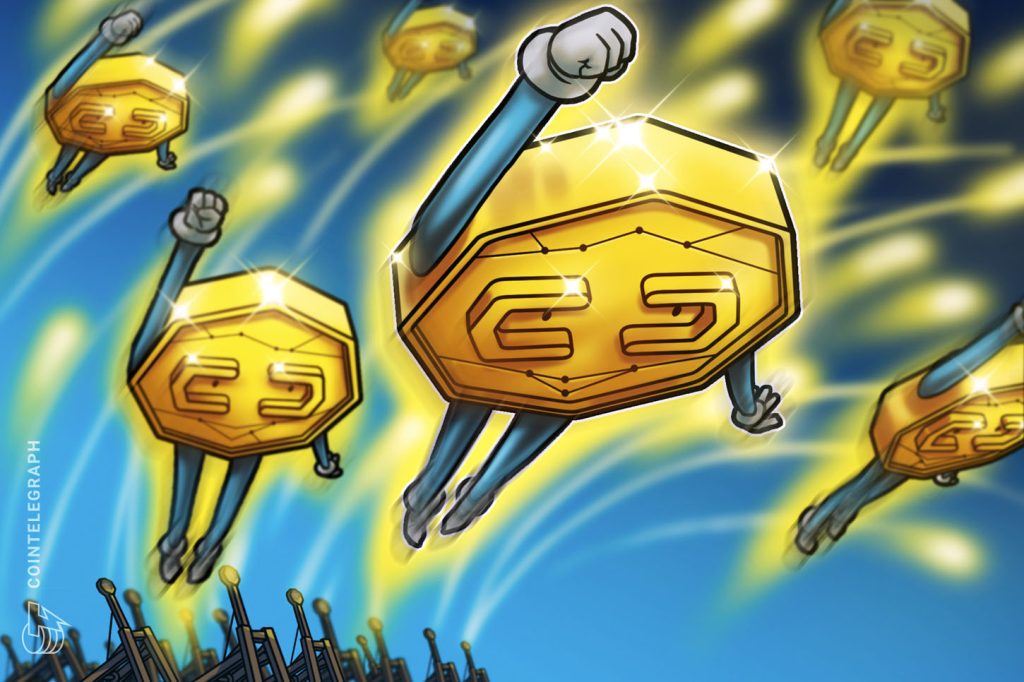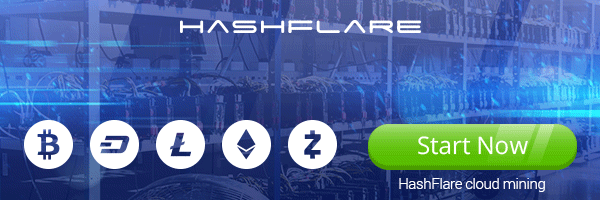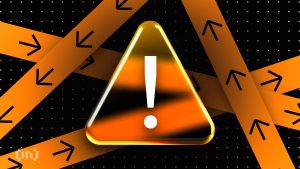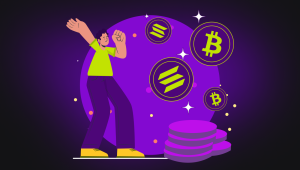5 altcoins that produced double-digit gains as Bitcoin price rallied in January

The rally in cryptocurrency markets started in early January with a spike in heavily-shorted altcoins and Ethereum (ETH) liquid staking derivative (LSD) tokens due to the upcoming network upgrade in March. Soon gains started to show across the board as buyers started to play catch up.
The improving macroeconomic conditions, such as reduced inflation and a stable job sector in the United States, provided additional tailwinds for the positive rally. Bitcoin (BTC) is en route to its most impressive closing for January since 2013. Its price has gained 40% year-to-date from the opening value of $16,530.
Another important catalyst for January’s rally was a short squeeze across the crypto market. After the FTX debacle and the lack of bullish narratives for the niche space, most investors expected growth to slow down in 2023.
There are unresolved issues such as potential Digital Currency Group fallout, geopolitical tension between Russia and Ukraine and recession risks due to the Fed’s aggressive quantitative tightening policies. Thus, most traders didn’t expect strong price rallies so early inthe year.
As it turns out, negative sentiment and crowded positions in the futures market continued to fuel more upside. There’s a strong chance of a pullback soon after steep gains. It remains to be seen if the pullback levels are attractive enough for buyers to turn it into a medium-to-long-term bullish trend. Let’s take a look at the top performing cryptocurrencies for January.
Aptos (APT)
Launched in October, Aptos is a relatively new blockchain in the space that leverages the technology of Facebook/Meta’s discarded crypto project, Libra. It carries significant face value based on its executive team, composed of former Meta engineers who also built the Move programming language to make the chain scalable and decentralized.
While the project carries much reputation, its fundamentals do not justify the price. The disbelief among investors is part of the reason behind the APT price rally. A market capitalization of $3 billion for a four-month-old project has surprised many onlookers. There’s also suspected market manipulation in the APT/KRW pair on Upbit, giving rise to the Kimchi premium. It is difficult to pinpoint a specific factor driving its demand in South Korea.
APT/USD broke above its previous peak of around $10, recorded around its launch. Technically, the token is in price discovery mode right now. Thus, there are few sell-side resistance levels besides the latest peak of $20 and the psychological level at $25. Unless the positive catalysts in the negative funding rate for perpetual swaps and the Kimchi premium cool off, the rally may still have wings.
But the token’s relative strength index (RSI), a price momentum indicator, has spiked to oversold territory, suggesting the possibility of a pullback. The moving average convergence divergence (MACD) indicator shows a slight bullish deviation with a less steep rise in the metric compared to the price. Still, the presence of buying volume is reassuring for APT bulls. The support for the token lies at $14.75 and $10.40.

Gala (GALA)
Similar to Aptos, Gala (GALA) also benefited from the excess negative positioning in the futures market. The gain in GALA/USD from $0.02 to $0.07 can be primarily attributed to wipe out of short positions.

The token suffered significant inflation of around 17,123,286 GALA daily, which accounts for around $28.2 million monthly at current prices. This raises concerns that the recent price pump could be short-lived.
On Jan. 25, Gala’s team introduced a new roadmap of the project in which they seek to update the tokenomics to reduce inflation and introduce a new burn mechanism. They are working on an independent Gala chain, where GALA tokens will be used to pay transaction fees.
On top of that, the daily issuance of GALA may also reduce after a vote is passed to change the time-based halving schedule to a supply-based one, bringing the halving closer than July 21.
The upgrade announcements have added to the buying pressure in GALA/USD, evident in a spike in buying volume. The token is trading above its 200-day exponential moving average at $0.052. If buyers build support above this level, the price can run toward the July 2022 breakdown levels near $0.164.

Threshold (T)
Threshold was born from the merger of two projects, Keep Network and NuCypher, which have combined their technologies to build a decentralized bridge network. Node operators on the Threshold network stake the platform’s native T token and Ether to validate the transfers between Bitcoin and Ethereum. This technology was borrowed from Keep Network, while NuCypher adds a layer of privacy to the protocol.
In January, the project’s native token nearly tripled in price, benefiting from the v2 launch and Coinbase’s listing announcements. The upgraded version of the Threshold protocol will enable tBTC (threshold Bitcoin) mints on Ethereum, which are backed by Bitcoin and pegged 1:1 to the BTC price.
The beginning of tBTC mints on Ethereum via Threshold Network will likely increase the network’s total locked value (TVL), making Threshold nodes more valuable. Initially, the project will launch a semi-decentralized version, Optimistic Minting, and gradually move to a decentralized system of nodes.
There’s a significant market opportunity for Threshold after the dissolution of RenBTC. Wrapped Bitcoin (WBTC) currently commands a dominant share of 93.6% of the total Bitcoin bridged to Ethereum.
Still, the recent 190% increase is starting to show signs of a buy-the-rumor, sell-the-news type of event, especially factoring in the Coinbase-led rise. The support for buyers lies at $0.027, with the next level of resistance at $0.145.
Decentraland (MANA)
The metaverse-themed projects Decentraland (MANA) and The Sandbox (SAND) witnessed a revival of the VR narrative as Apple is rumored to be launching its VR headset collection this spring. More recently, the Decentraland team released its manifesto for the current year, with a focus on growing its developer and creator community.
While Decentraland is one of the earliest metaverse projects with a massive opportunity to capture the future Web3 market, the present rally is showing overbought characteristics in the short-term.
The RSI indicator shows a reading above its bullish resistance. The MACD indicator shows a divergence with little to no-change in the metric to complement the Jan. 28 surge of 16.5%.

Nevertheless, the breakout above 200-day moving average and resistance from the FTX breakdown levels at 0.70 is encouraging for technical buyers. It remains to be seen if the surge was a just stop hunt of short orders or stemming from actual demand. Support for the token lies at the 50-day EMA, current at $0.54, and 2022 lows of $0.27.
Solana (SOL)
Solana (SOL) benefited from excessive negative sentiment around the blockchain’s future. The price rally was a classic case of a short squeeze in the futures market. While the fundamentals pointed toward a death spiral in its price, the market played out differently. By leveraging low liquidity conditions, buyers were able to push the prices higher until few sellers remained.
The market maker and venture capitalist entity, Alameda Research, was the primary source of liquidity for Solana’s DeFi projects. It was also one of the largest backers of its ecosystem projects. The DeFi community will face significant challenges within Solana due to a lack of liquidity.
Solana developers and the foundation have been working hard to make the network stable and more decentralized. While the network remained stable through the FTX debacle, it appears to have lost the market’s trust thanks to frequent downtimes. Moreover, Alameda/FTX owns around 10.7% of the total supply of SOL, which will likely add to the selling pressure for the next few years.
Their NFT space, while placed second in terms of trading volume across blockchains, is starting to see the departure of top performers like DeGods, y00ts, and most recently, F Studio. It remains to be seen if the community can build back up. The task will be challenging without the support of its most prolific backers.
On long timeframes, the $30 level is a crucial resistance and support level for SOL/USD. If buyers consolidate above this level, the positive momentum in the token’s price will likely stretch into Q1 2023. However, given that the rally is mainly driven by a short-side wipeout in the futures market, there’s a higher likelihood for a significant correction, followed by a period of accumulation, until a meaningful run can take form.
Last but not least, the LSD-narrative tokens deserve a mention in the monthly winners list. The native tokens of Ethereum LSD platforms nearly doubled in price across the board thanks to the upcoming Shanghai upgrade.
The Frax DAO was the highest gainer among LSD tokens, benefiting from a strong rise in the staked Ether on its platform. The platform is able to attract liquidity by providing additional yield on staking ETH through leveraging its position on Curve Finance.
The Frax DAO is the largest owner of CVX tokens, which gives them priority control over Curve emissions. Currently, staking frxETH on Curve earns around 9-10% annual yield, which is two times higher than the average LSD yield of around 4%.
Given that Ethereum’s Shanghai upgrade is still a month away and there’s room for growth of LSD platforms, the attention toward LSD tokens could likely sustain through February.
The views, thoughts and opinions expressed here are the authors’ alone and do not necessarily reflect or represent the views and opinions of Cointelegraph.
This article does not contain investment advice or recommendations. Every investment and trading move involves risk, and readers should conduct their own research when making a decision.















